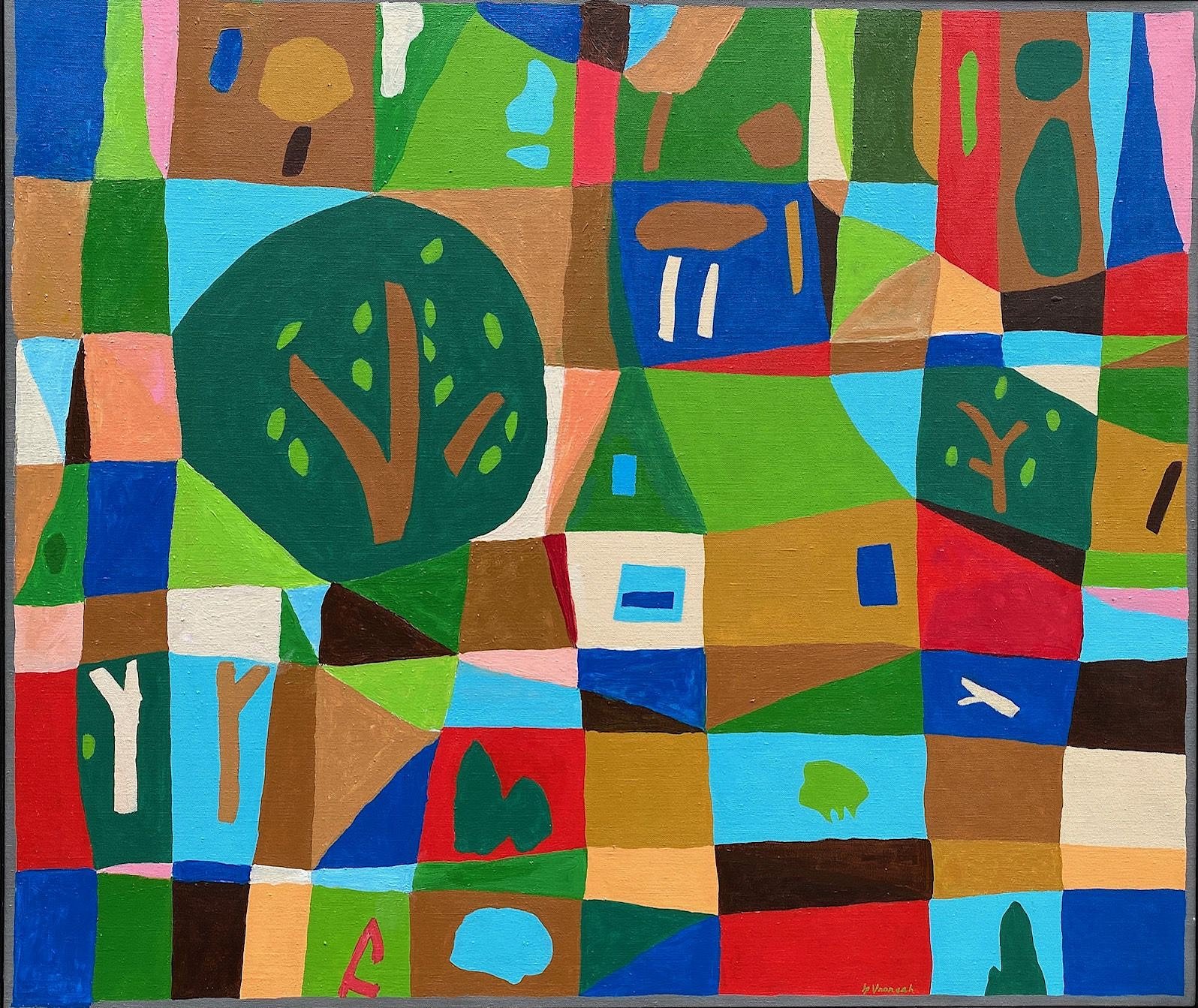
George Vranesh
Yacht Club, 30x30
Shed at New Harbor, 34x40
The Point, 30x24
Coming Storm, 36x36
Airing Out, 28x22
Many of the paintings in the Alaskan Horizon series were exhibited at the 10/4 Group, an artists’ cooperative gallery in New York City co-founded by Vranesh in the early 1960s. Other exhibitions featuring the works were shown in New York, New York; Anchorage, Alaska; and Newport, Rhode Island—including a solo exhibition at the Newport Art Association in 1973. These large landscapes are considered to be some of his strongest work; he often reused existing motifs developed from Alaska in his later paintings. New York Times art critic and Vranesh collector, Hilton Kramer, observed that Vranesh’s spatial perspective, which tends to be aerial in character, was an important marker that defines the originality of his work. Kramer wrote: “It is a perspective from ‘above’ – not from the heavens, but as if from a ship’s deck or a bridge or other earthly heights.…”
His subjects were rooted in personal experiences: travel and work, but Vranesh found his most important technical revelations in Amédée Ozenfant’s Foundation of Modern Art and Hans Hofmann’s color theory. Ozenfant’s emphasis on rational ordering of objects provided a basis for arranging shapes. Hofmann believed that a modern artist must remain faithful to the flatness of the canvas. To suggest the illusion of space, depth and movement in a picture, artists should create contrasts of color, form and texture in a relationship he called the “push and pull” of colors and shapes. The visual structure of Vranesh’s work is defined by Hofmann’s color theory and the purist ideas of Ozenfant (and his collaborator, Le Corbusier). In his work, space is determined by color and color is asserted by an attention to clarity as defined by the clean-hard edges with no overlapping of forms or concealment through layering of paint.
Vranesh found inspiration from European Modernists as well as American Abstractionists like Stuart Davis. His early work was strongly influenced by his teacher Will Barnet, who was a member of the Indian Space Painters group. They looked to Native American art as a means to explore abstraction and incorporate surrealist elements. Native American art reduced nature to flat linear symbols and created images in which it was nearly impossible to distinguish positive from negative space. Later works expressed progressively more figurative abstract compositions as he matured as an artist.
Vranesh taught various subjects in art and media in both private and public schools. He worked up until his death in 2014 at his studio and home in New York. A true American modernist, he created drama that he described as “both psychological and physical reflecting my beliefs, hopes and tastes, and perhaps those of the viewer. It is communication. It may also be an aesthetic experience.”






